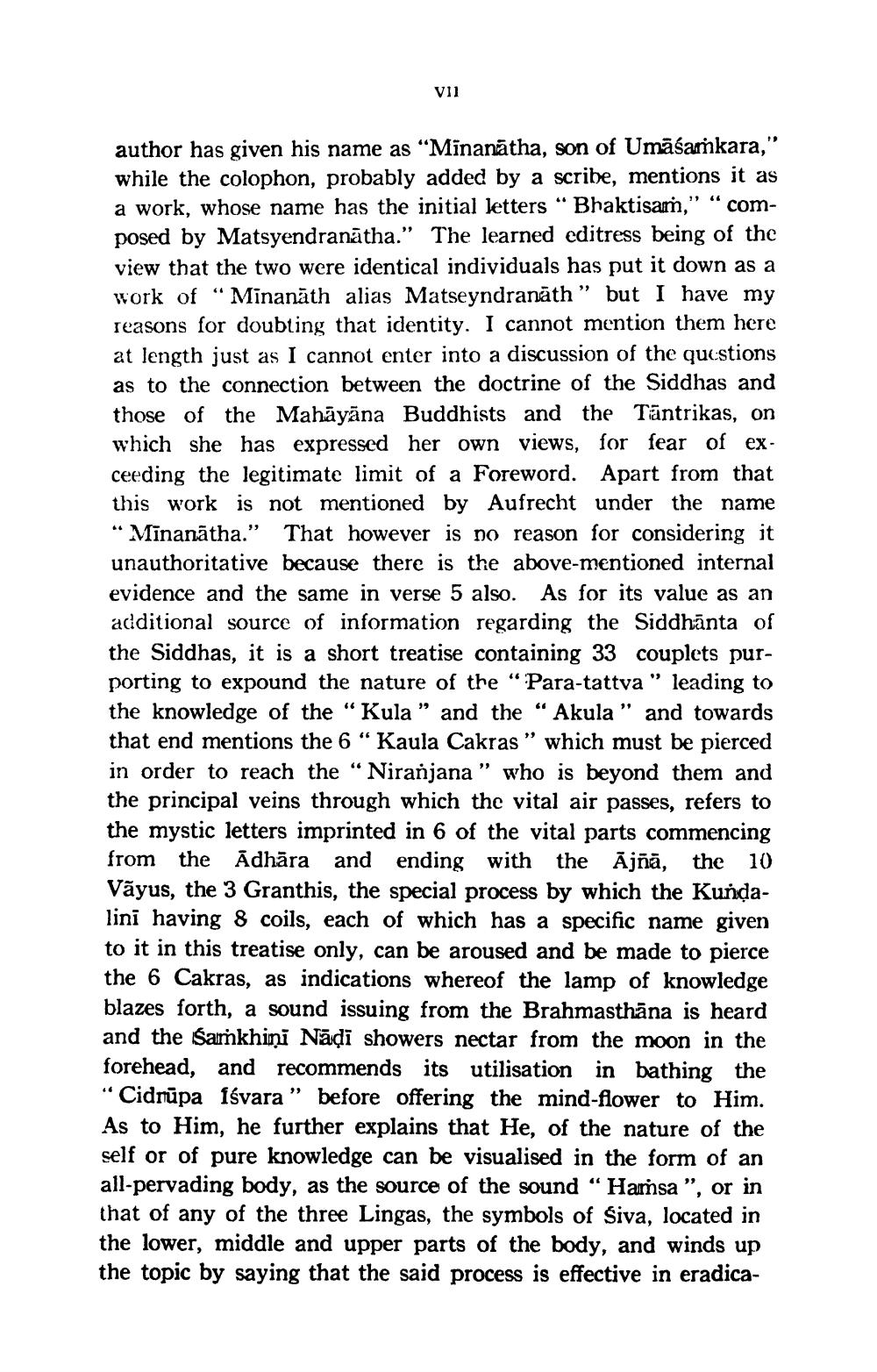Book Title: Siddha Siddhanta Paddhati Author(s): Kalyani Mallik Publisher: Poona Oriental Book House Poona View full book textPage 9
________________ V11 author has given his name as "Minanatha, son of Umāśamkara," while the colophon, probably added by a scribe, mentions it as a work, whose name has the initial letters "Bhaktisam,' composed by Matsyendranatha." The learned editress being of the view that the two were identical individuals has put it down as a work of "Minanath alias Matseyndranath" but I have my reasons for doubting that identity. I cannot mention them here at length just as I cannot enter into a discussion of the questions as to the connection between the doctrine of the Siddhas and those of the Mahayana Buddhists and the Tantrikas, on which she has expressed her own views, for fear of exceeding the legitimate limit of a Foreword. Apart from that this work is not mentioned by Aufrecht under the name "Mīnanatha." That however is no reason for considering it unauthoritative because there is the above-mentioned internal evidence and the same in verse 5 also. As for its value as an additional source of information regarding the Siddhanta of the Siddhas, it is a short treatise containing 33 couplets purporting to expound the nature of the "Para-tattva" leading to the knowledge of the "Kula and the Akula and towards that end mentions the 6" Kaula Cakras" which must be pierced in order to reach the "Niranjana" who is beyond them and the principal veins through which the vital air passes, refers to the mystic letters imprinted in 6 of the vital parts commencing from the Adhara and ending with the Ājñā, the 10 Vayus, the 3 Granthis, the special process by which the Kundalini having 8 coils, each of which has a specific name given to it in this treatise only, can be aroused and be made to pierce the 6 Cakras, as indications whereof the lamp of knowledge blazes forth, a sound issuing from the Brahmasthāna is heard and the Samkhini Nadi showers nectar from the moon in the forehead, and recommends its utilisation in bathing the Cidrupa fśvara" before offering the mind-flower to Him. As to Him, he further explains that He, of the nature of the self or of pure knowledge can be visualised in the form of an all-pervading body, as the source of the sound "Hamsa ", or in that of any of the three Lingas, the symbols of Siva, located in the lower, middle and upper parts of the body, and winds up the topic by saying that the said process is effective in eradica 29 66 19 29 66Page Navigation
1 ... 7 8 9 10 11 12 13 14 15 16 17 18 19 20 21 22 23 24 25 26 27 28 29 30 31 32 33 34 35 36 37 38 39 40 41 42 43 44 45 46 47 48 49 50 51 52 53 54 55 56 57 58 59 60 61 62 63 64 65 66 67 68 69 70 71 72 73 74 75 76 77 78 79 80 81 82 83 84 85 86 87 88 89 90 91 92 ... 166
